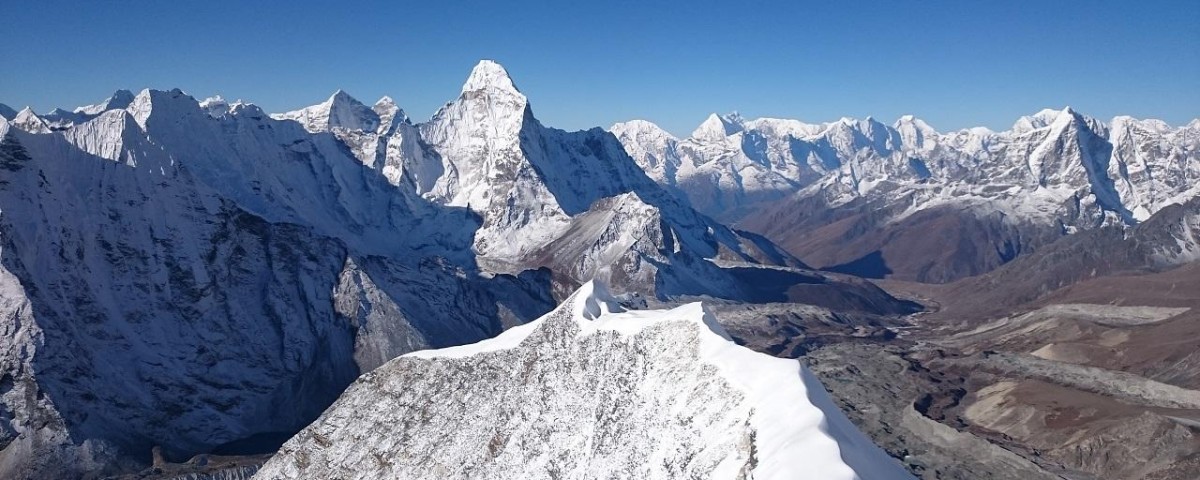My Gopro footage captured on Island Peak |
|||
|
15th to 18th October 2015. Elevation: 6189m / 20,305ft My Island Peak journey began months before I arrived in Nepal. I went on the trip with Ian Taylor Trekking. I found Ian and his team to be absolutely fantastic on the trip and also in the weeks and months beforehand with training tips and advice. The Island Peak part of the trip began in Pheriche at 14,340ft, where our Everest Base Camp journey ended. There was a very distinct line between the two parts of the trip. In Pheriche we split off from our main Everest Base Camp group in the morning as they began their journey back down the valley toward Namche, Lukla and eventually home. At that point there was just five of us left who would be making our way to Island Peak, myself and a young Australian man along with three Sherpas. |
|||
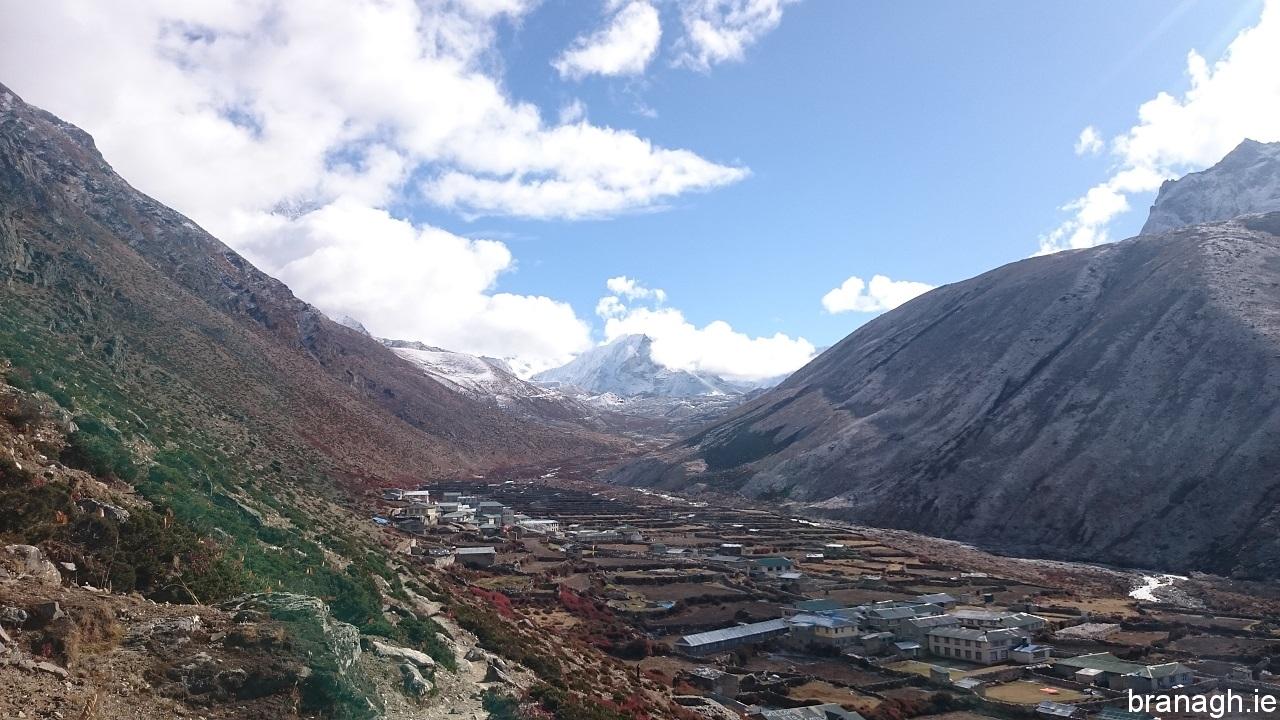 The view of Dingboche and Island Peak as we approached from Pheriche |
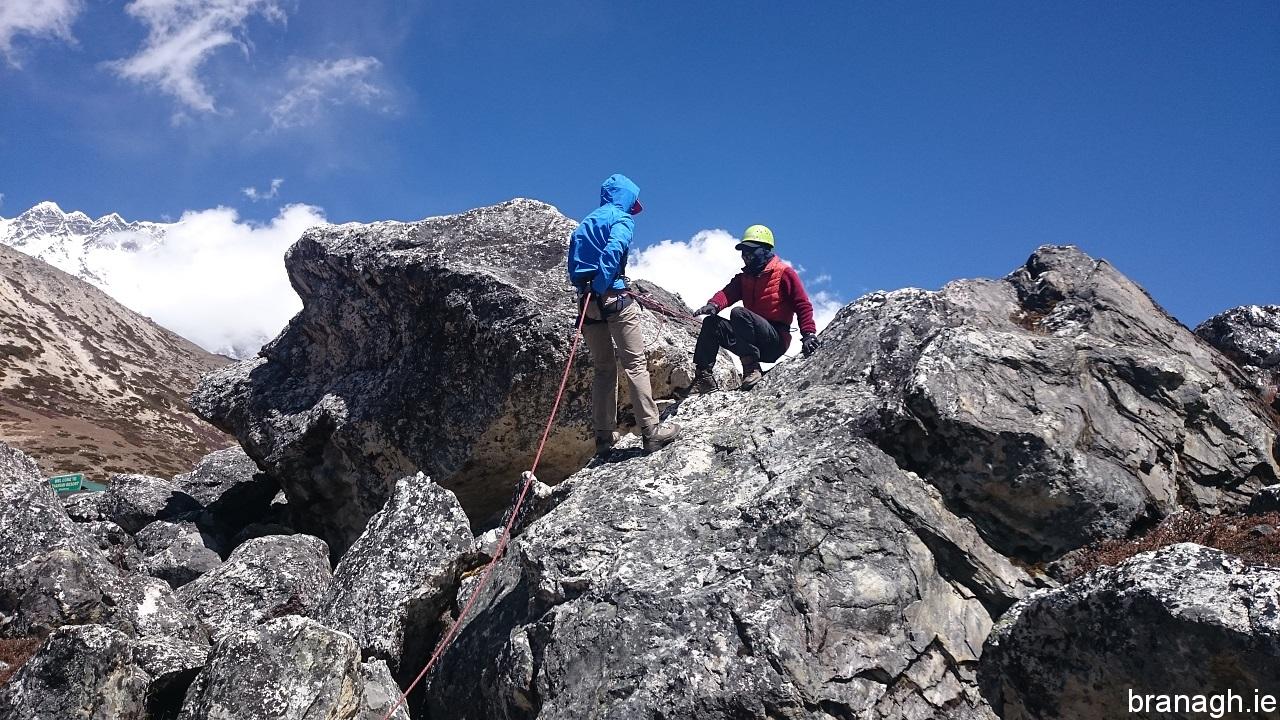 Our first training session at Chukhung |
||
|
We hiked up the small hill to Dingboche fairly quickly, where we stopped for coffee before setting off further up the valley to Chukhung. We arrived early afternoon and had lunch before taking a few hours to rest and organise what gear we would be taking to Island Peak. We would be taking only what we needed to climb Island Peak and leaving the rest securely stored at the lodge in Chukhung. I also took the opportunity to place my solar charger in the sun for a few hours to make sure I had fully charged batteries for Island Peak. That evening in the lodge was much quieter than we had been used to with the large EBC group. I think we were also a little anxious about the task ahead. We had overheard another group talking about how they failed in their Island Peak summit attempt due to the very deep snow conditions only the day before (October is post monsoon). To come this far and be unable to reach the summit would be absolutely devastating. Next morning we were in no big rush to leave as Island Peak base camp was only a few hours trek from Chukhung so we left around mid morning. That gave us lots of time to pack up our gear. |
|||
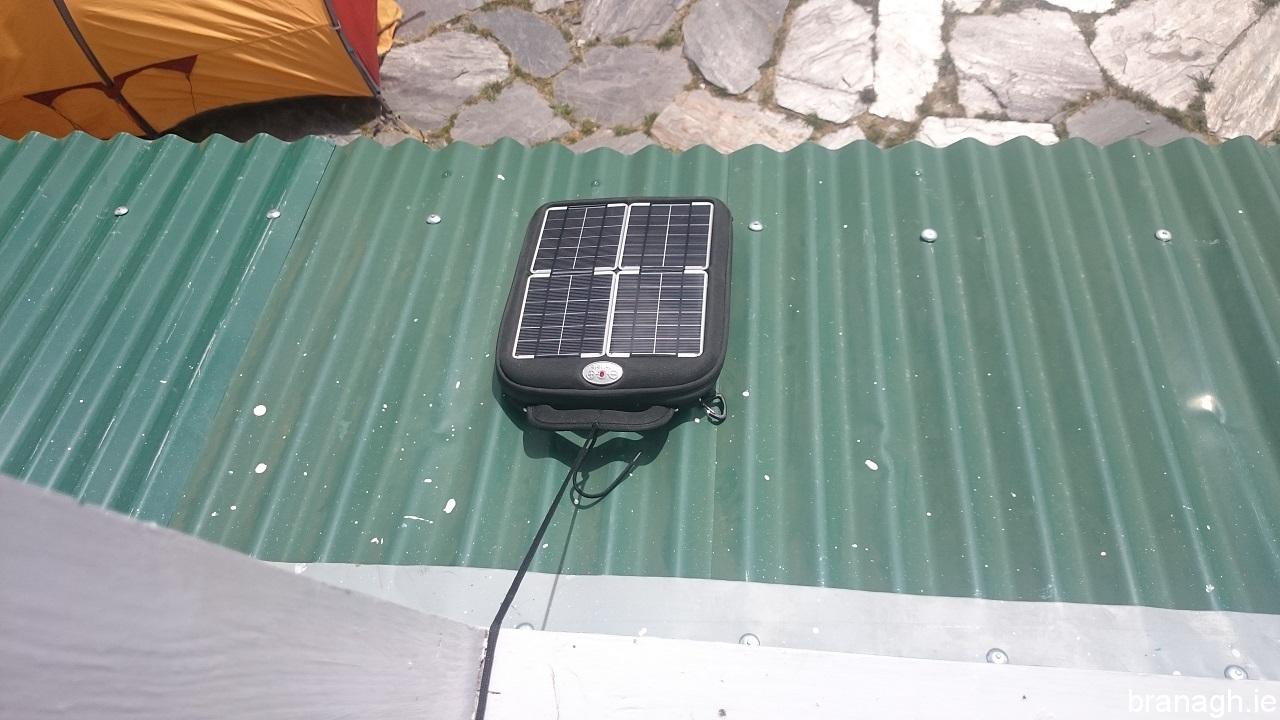 Topping my batteries up with the solar charger |
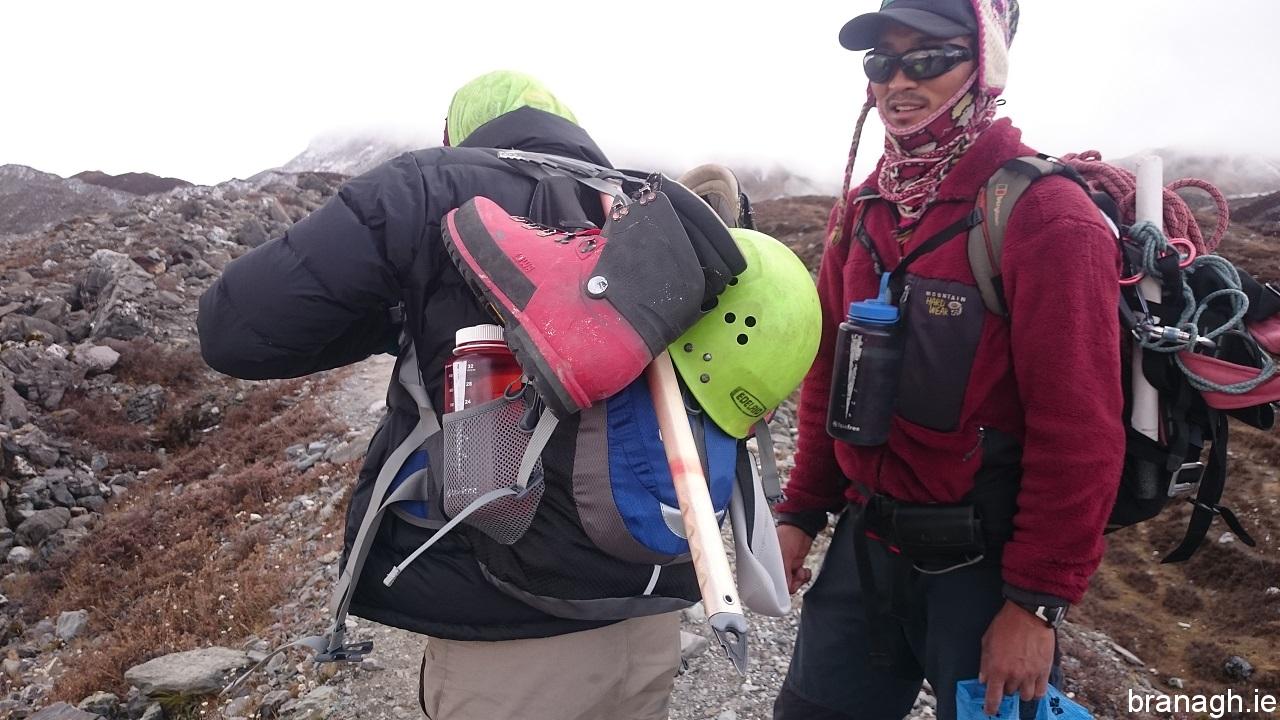 Loaded up ready for the trek to base camp |
||
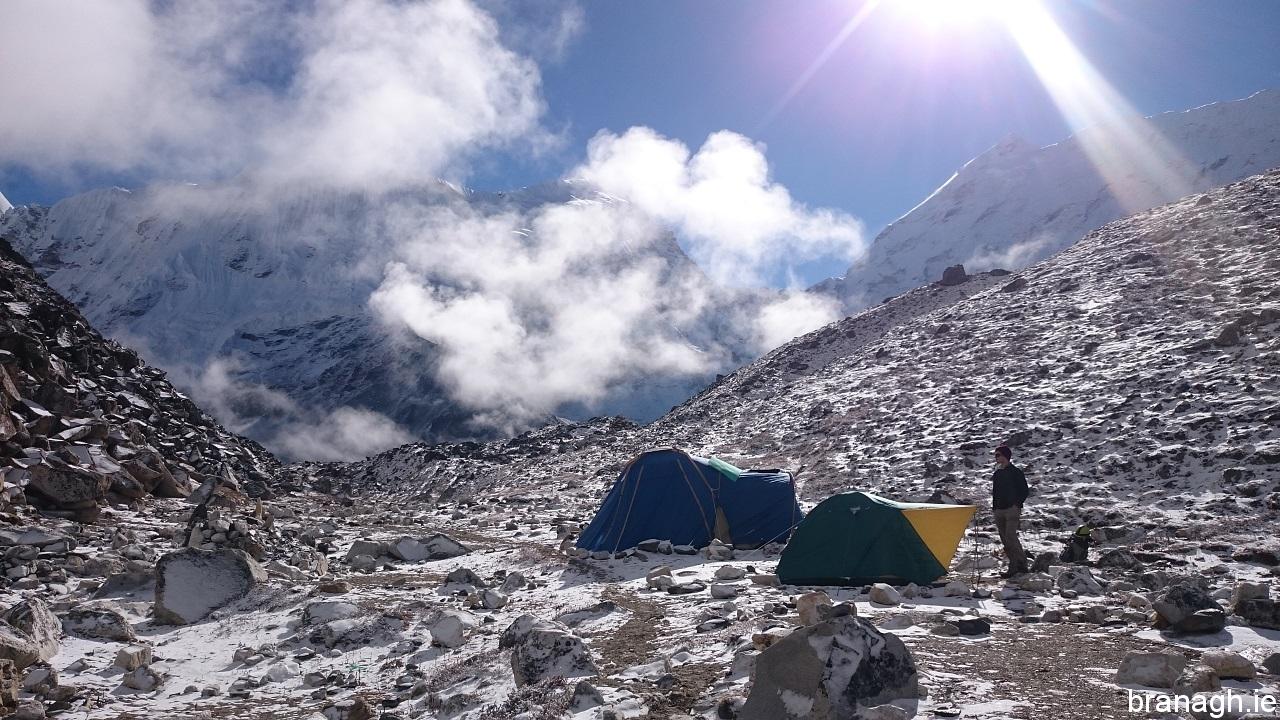 Our spot at Island Peak base camp |
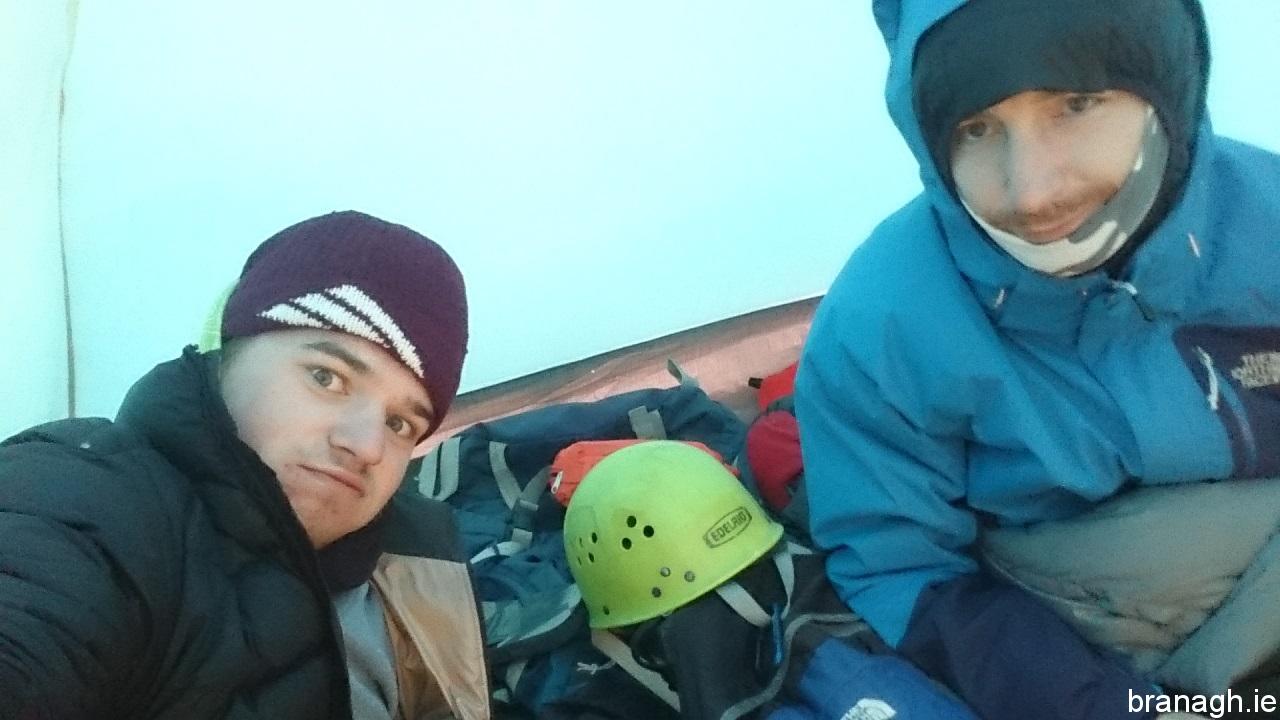 Battling with the cold temperatures in the tent |
||
|
Many groups spend two nights at Island Peak base camp before a summit attempt, to allow for more training and acclimatization time. Based on our condition, our demonstrated ability and the weather forecast, our lead Sherpa decided that we would push on up to high camp after just one night at base camp. The first couple of hours after breakfast were spent doing some extra rope training before we began our ascent up to high camp. The route to high camp is steep, and zig zags back and forth. It was very tiring. The view behind us as we ascended became more fantastic with every step upwards though. High camp at 18,044ft is on very steep, rocky terrain. Tents appeared to be randomly placed on any reasonably flat piece of ground big enough to fit them, tied down using the ample loose rocks available. We arrived early evening. There wasn’t much to do at high camp either apart from rest, eat and a final check of our gear. At this point I replaced the memory card and battery in my Gopro with fresh ones for the summit push. After dinner we prepared for a few hours sleep. We planned to start at 2.30am. The Sherpas brought us some breakfast in our tent before our summit push. They also gave us some hot drinking water for our Nalgene bottles. I have an insulated sleeve for my Nalgene bottle after learning the hard way on Kilimanjaro the previous year, what can happen to drinking water in extreme cold at high altitude at night. |
|||
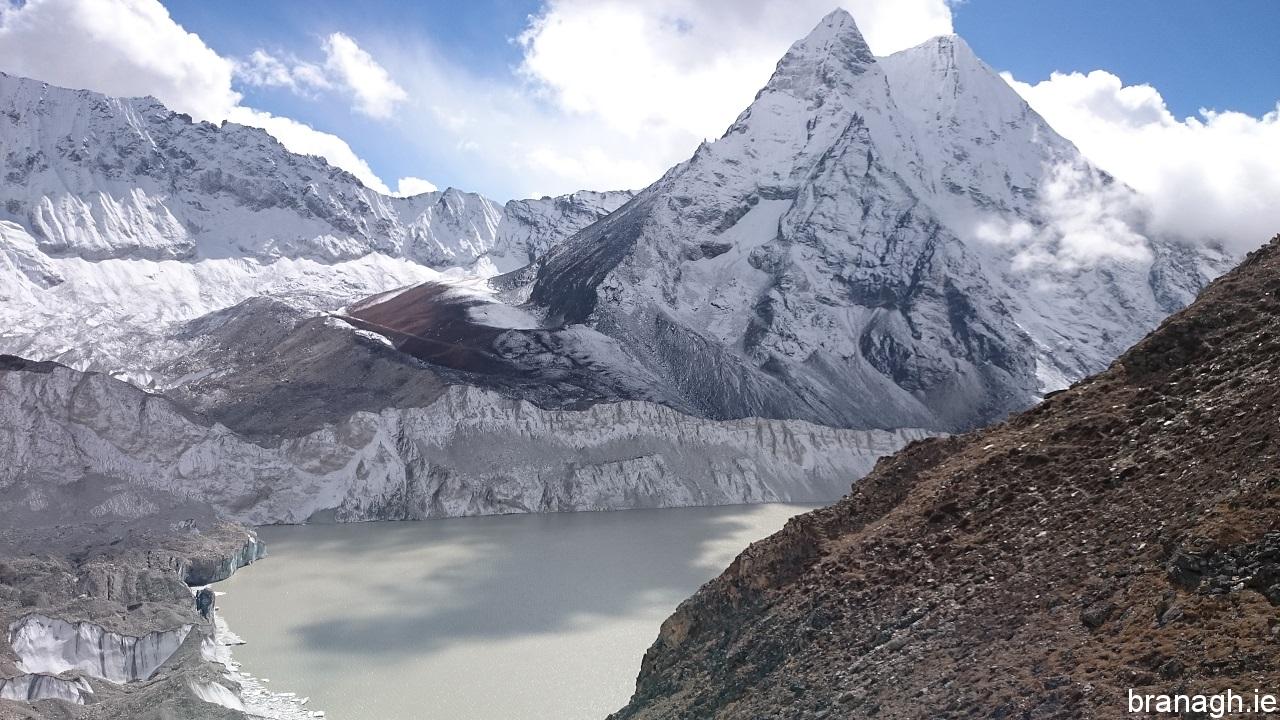 The view behind us as we ascended to high camp |
|||
|
The glacier was totally covered in snow which took the energy out of every step. I found it very tiring and was just waiting for the first hint of sunrise, for the energy and warmth that I knew the sun would bring. By the time we reached the base of the headwall there was a little light in the sky. It was soon after joining onto the fixed ropes that I was able to turn off my headlamp and make use of the approaching daylight. Now I felt strong. Now I felt motivated, a little too much though it would turn out. I ascended up the first two thirds of the headwall very quickly as I could see the summit not far away. This burst of “summit fever” severely drained my energy though and I hit the wall. The remainder of the way to the summit would be absolutely exhausting but stopping was never ever an option. While on the headwall I watched the sun rising in the Himalayas around me. That was a view that words cannot describe. The realisation of where I was and what I was doing at that point is something I will never forget. Along with my exhaustion, I was overcome with emotion. I have no shame in saying that there were some tears behind my sunglasses on that headwall and also later when I was on the summit. The entire trip and all the planning and training for months beforehand was all in preparation for this point, and I was going to make it to the top. The summit ridge was the last obstacle to overcome. Only about a foot wide, like a knife edge it would take me the rest of the way to the summit, stopping every few metres to move my safety line past the anchor points. I reached the summit at 20,305ft around 7am. By that stage the sun was fully up and the views were breathtaking. We took photos and waited for other climbers to reach the summit. We had been ahead of most other climbers that day. We spent about forty minutes enjoying the summit, taking photos and waiting for other climbers to arrive and clear the route before starting back down the summit ridge. |
|||
 My summit photo |
 Julian’s summit photo. (My Australian climbing partner) |
||
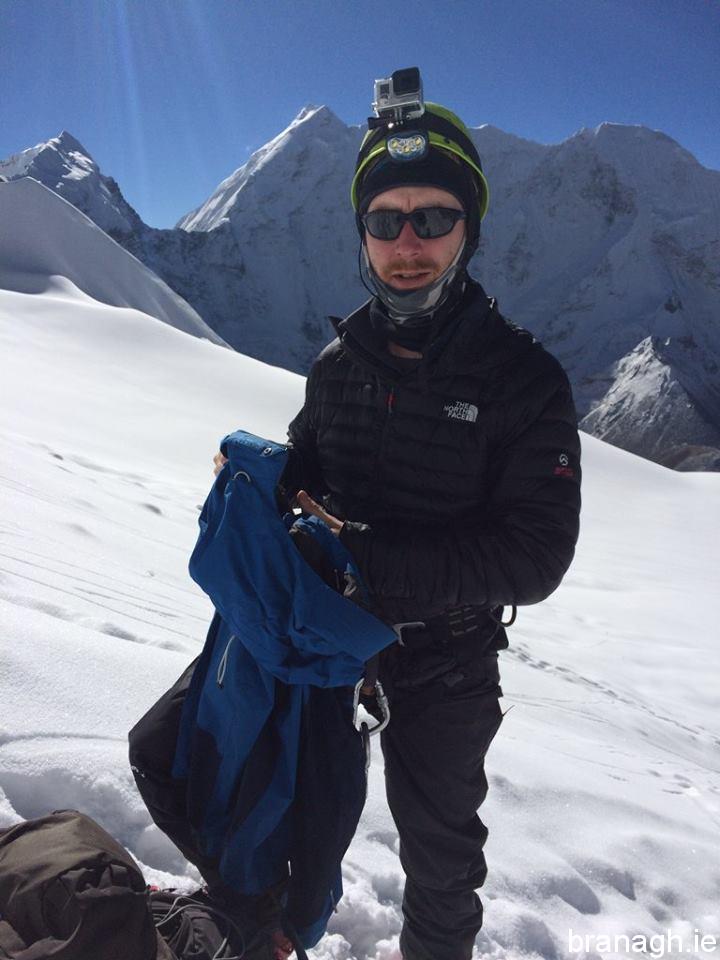 Removing some layers when the sun began to get hot |
 Looking back up the headwall after abseiling down. |
||
| I collapsed into the tent back at high camp where I slept for a few hours, through the midday sun. Due to the heat in the tent while sleeping, the climb and probably dehydration due to the limited availability of water at high camp, I felt absolutely awful when I woke up, totally exhausted. I knew however that we had to get back to Chukhung for a proper rest and the only way I was going to get there was by trekking, so I picked myself up, put my aches, pains and tiredness aside and started moving. The trek back to Chukhung felt very long with frequent rest stops. When we eventually got to the lodge I bought a bottle of full sugar Coke and a packet of Pringles. Such items are hugely expensive so high on the EBC trail but a luxury I felt I had earned and that my body was craving. The next morning, after sleeping like a baby and refueling with food and water I felt fantastic. Most people would not descend all the way from Chukhung to Namche in one day but we felt strong that day so we did descend all the way to Namche. Being honest, the other reason we descended so fast is because there is a bar in Namche and we really wanted a beer!! |
|||
